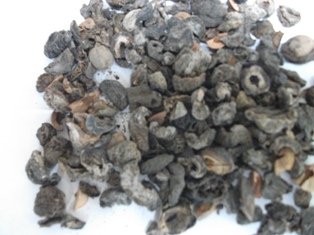Dry Gooseberry (Phyllanthus Emblica L.)
General Information
| Name | Dry Gooseberry |
|---|---|
| Code | Dry Gooseberry |
| Botanical Name | Phyllanthus Emblica L. |
| Nepali Name(s) | Amala (अमला) |
| Availability | Available Request a Quote |
| Minimum Order Quantity (MOQ) |
Pricing
Please contact us for pricing.
Special Offers
Currently there are no Offers for this item.
Details
Availability:
Fresh Berries - during Season
Dried Berries - whole year + off season
Details: Gooseberry / Amala
Amla (Gooseberry) is a potent gift of Nature to mankind. Humanity has utilized its benefits for decades, and it forms an indispensable part of the ayurvedic and unanai medicine. You must have seen your granny using Amla (Gooseberry) for pickles and murabas and its formulations for treating many common diseases. Amla or Gooseberry has many nutritious benefits. The Amla (Gooseberry) has been found to be the most abundant source of Vitamin C in the plant kingdom.
containing as much as 20 times that of an orange. What makes this even more extraordinary is that unlike many other natural sources, the vitamin C content in Amla (Gooseberry) or gooseberry does not diminish with cooking. It was used successfully in the treatment of scurvy during the Hissar (Haryana) famine of 1939-40.
Amla (Gooseberry) is a medium sized deciduous tree which can be successfully grown in cariable agro climatic and soil conditions. It can tolerate climates as high as 45 degree celcius and freezing temperatures too.
Though every part of the tree possess therupetic potentials, it is the fruit which constitutes the main drug. Amla (Gooseberry) is an unusual fruit as it contains gamut of tastes, except the salty taste. With sourness as the foremost taste , it is sweet, astringent bitter and pungent too.
The fresh fruit contains more than 80% of water besides protein, carbohydrates, fibre, minerals and vitamins Minerals and vitamins mainly include cacium, phosphorus, iron, carotene, Vitamin C and B complex. It also contains gallic acid, which is a potent polyphenol.
Amla (Gooseberry) is the most widely used herb in ayurvedic medicines. Charak and sushrut widely mention the use of Amla (Gooseberry) for curative purposes.
Amla (Gooseberry) is used in innumerable Auyrvedic formulations. Here is how you can alleviate some of the common ailments through these time-tested decoctions. Put your body back into action following these tips.


_1.jpg)
_2.jpg)
_3.jpg)
_4.jpg)